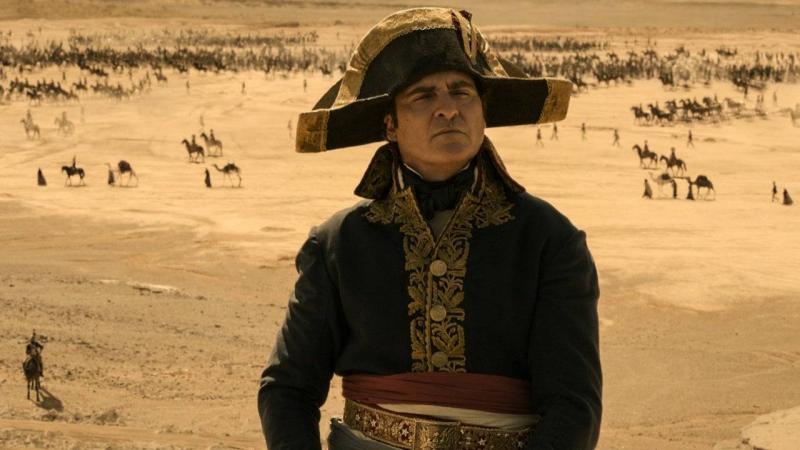Scenes from the new film "Napoleon" directed by Ridley Scott, recently released, have reignited the debate over whether Napoleon fired artillery at the Sphinx statue and the Pyramids of Giza in Egypt. There is no evidence that the French fired artillery at the pyramids or that Napoleon's forces shot at and broke the nose of the Sphinx, according to the New York Times.
In an interview with the British Times, Ridley Scott, when asked if Napoleon actually targeted the Pyramids of Egypt, said: "I don't know if he did that, but it was a quick way to say he had control over Egypt." The nose of the Sphinx has intrigued historians over time as they seek to understand the true reason for its destruction. Among the prominent theories about the Sphinx's nose is that it was broken due to erosion and rain, while others believe it was originally carved without a nose at all.
Professor Salima Ikram, an Egyptologist at the American University in Cairo, stated: "The French forces definitely did not fire shots at the pyramids. What we know is that Napoleon had great admiration for the Sphinx and the Pyramids, and he used them as a means to motivate his troops toward greater glory."
Some historians criticized director Scott, though many hope that "Napoleon" will spark interest in the events that inspired the film. While Napoleon did not literally direct any projectiles at the pyramids, his entry into Egypt profoundly impacted Egyptian cultural heritage and how it is understood by the world today.
The French campaign in Egypt, from 1798 to 1801, was driven by Napoleon's colonial ambitions and a desire to thwart British influence. However, in addition to mobilizing an army of about 50,000 soldiers, Napoleon made an unusual decision to invite over 160 scientists from fields such as botany, geology, and the humanities to accompany him in the invasion.
The scientists documented the landscapes and cultural heritage of Egypt, ultimately compiling their findings into a seminal publication in 1809 that included details about the Giza Pyramids area. In their efforts to document Egypt's vast archaeological heritage, French scientists acquired many significant artifacts, including the Rosetta Stone, a rock inscribed in three languages that proved effective in deciphering ancient Egyptian hieroglyphs. The stone and many other spoils eventually ended up in British hands after the collapse of French control over Egypt in 1801.




